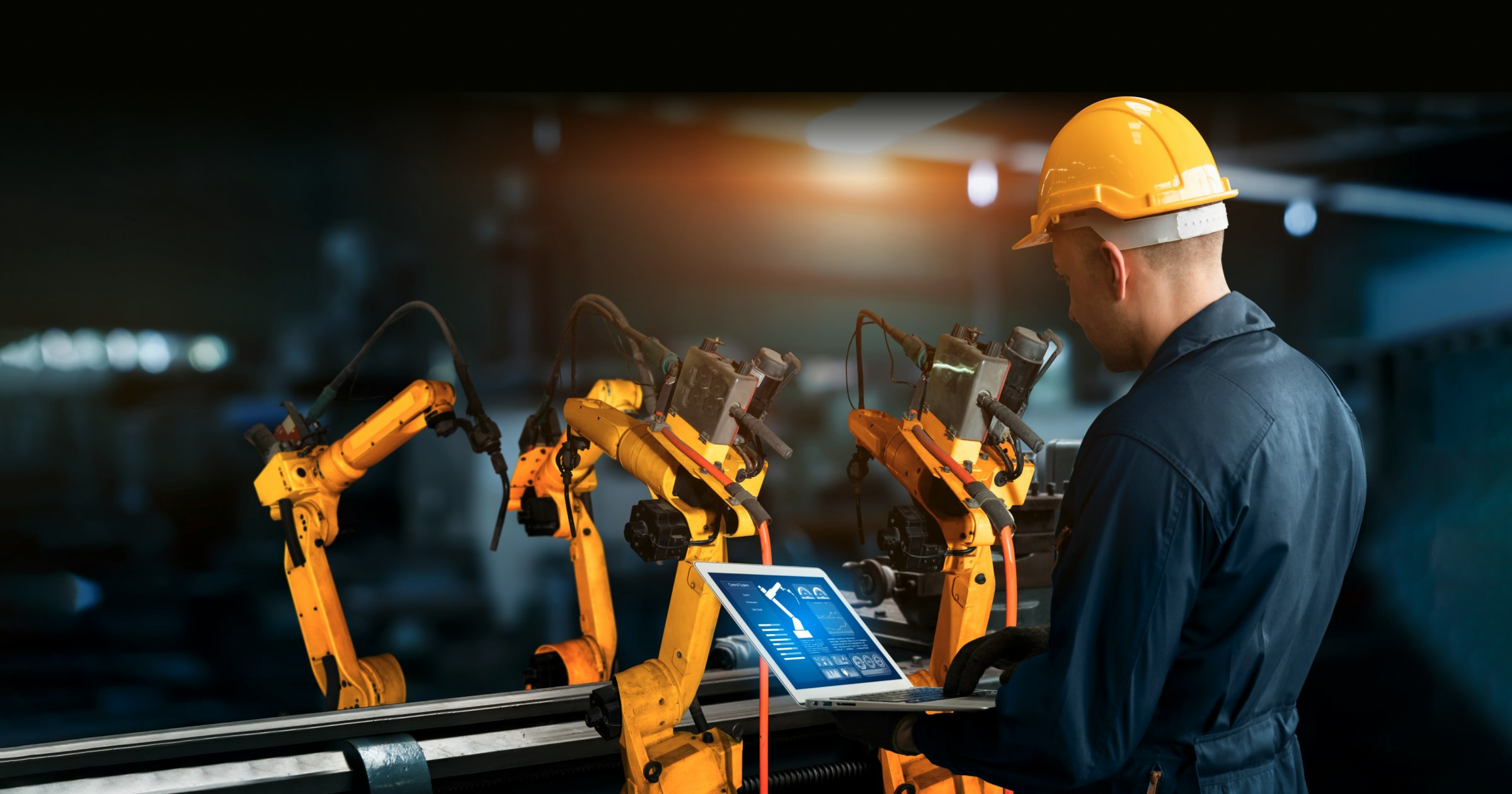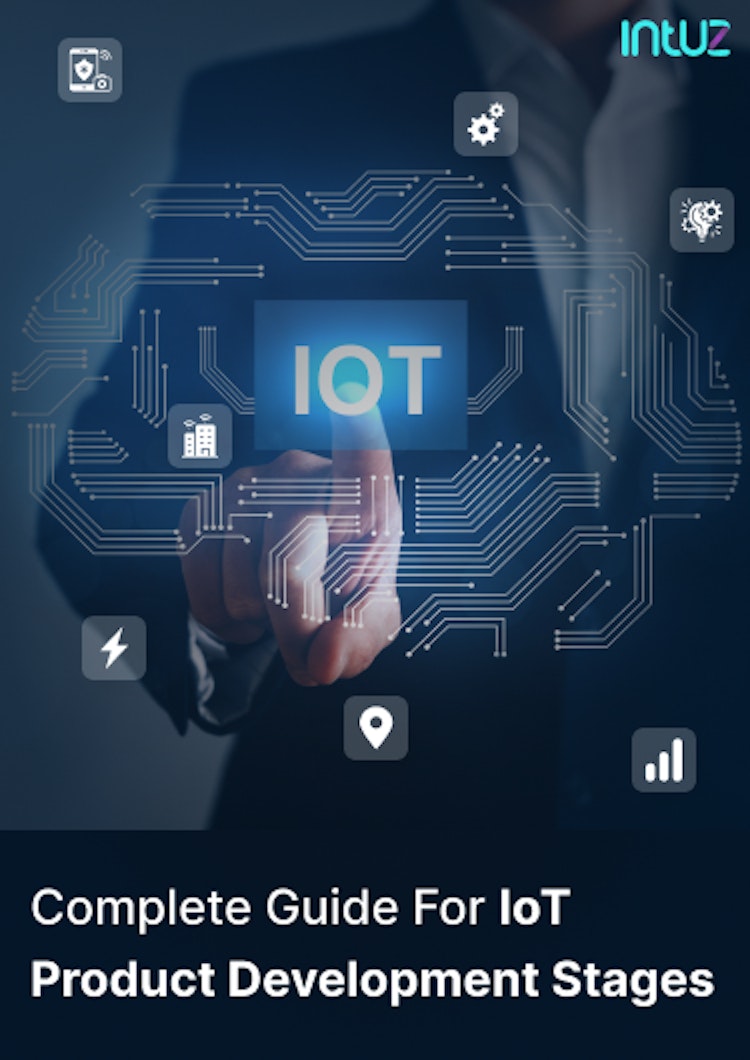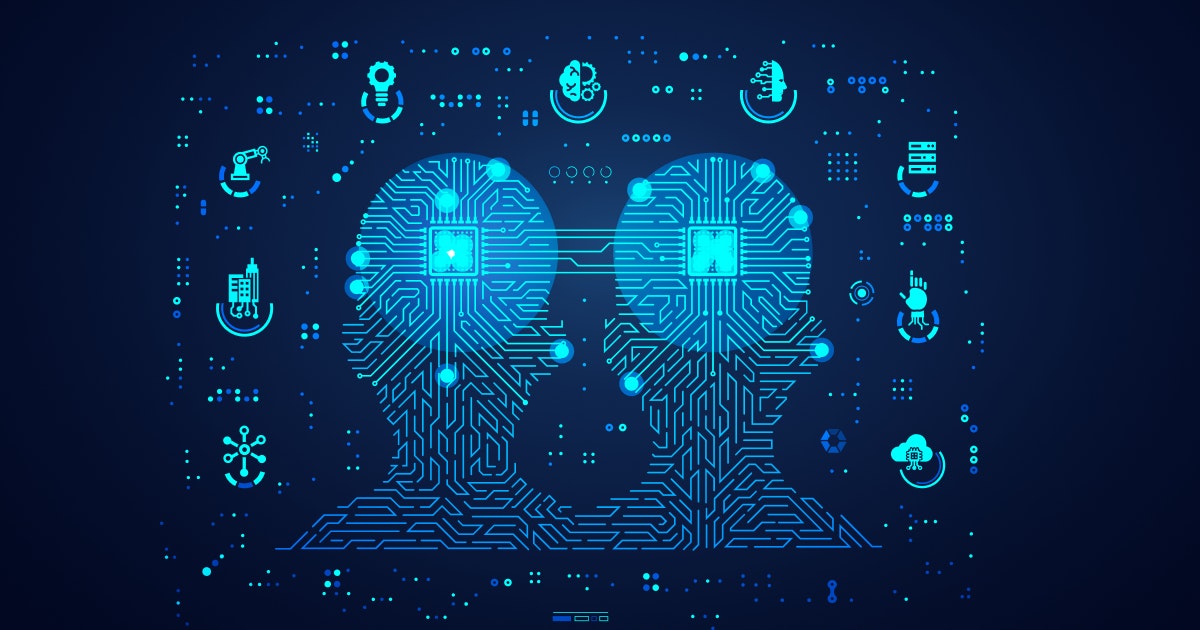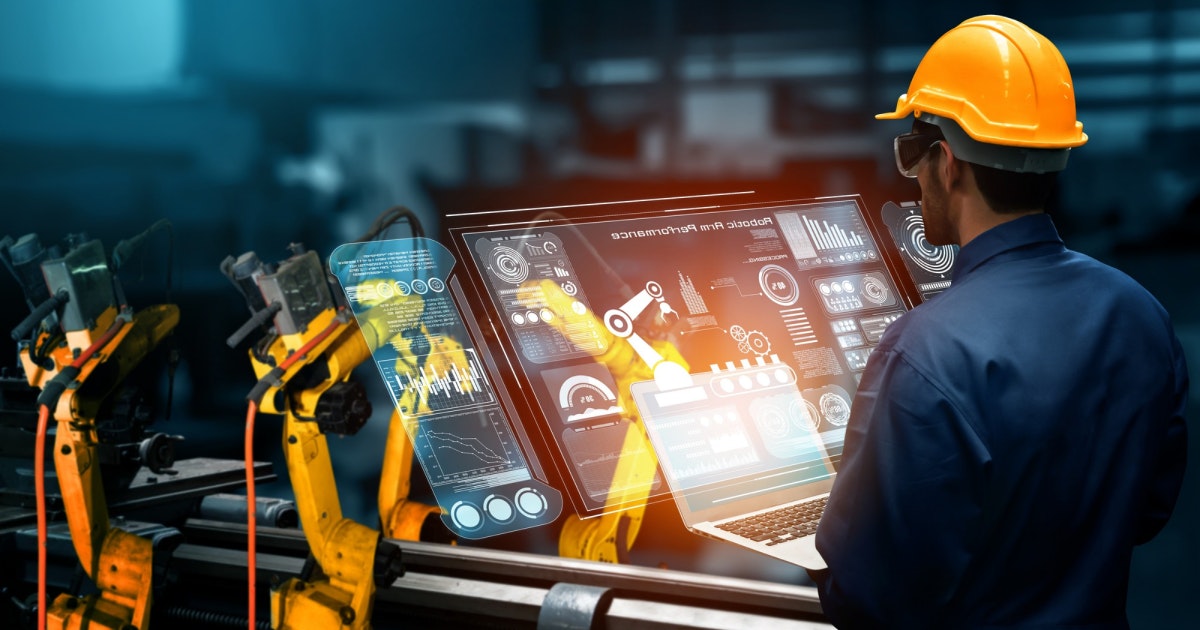There is a lot of noise at the moment about the Internet of Things or IoT and its effects on everything — from the way we shop or travel to how manufacturers keep track of inventory to how doctors monitor patients in real-time.
Technology is developing rapidly, and devices such as cars and refrigerators have learned to connect to the network and exchange data without human intervention.
Stepping into the world of IoT
Software, hardware, communication infrastructure, and "connected devices" merge to create a technological ecosystem called the "Internet of Things." Let us explore the concept in a bit more detail for greater understanding.
In simple words, IoT describes the process of connecting any device (with an on/off switch) to the Internet and other connected devices. It is a giant network of "things" and people who collect and exchange data about their use and environment.
That includes many objects of all shapes and sizes — from microwaves so you can automatically cook your food to self-driving cars, whose complex sensors detect objects in their path, to wearable fitness devices that measure your heart rate and the steps you take in a day.
What is Industrial IoT or IIoT?
The Industrial Internet of Things is also known as IIoT and refers to connected industrial-grade applications to collect and analyze data. IoT offers a fantastic opportunity to increase efficiency in factories.
The sensors installed on machinery, systems, and assembly lines convert data into analytical information useful for managers and machine operators.
They integrate data from different devices and apply analytics to share the best insights to address specific requirements. The information can detect patterns, give recommendations, and help make decisions promptly.
Let's Develop Your Custom IoT Monitoring Solution!
Get StartedIndustrial IoT remoting solutions in different sectors
Industries such as manufacturing, automotive, transportation, energy, and healthcare benefit from the technology by deploying advanced analytics solutions.
For instance, if you are a car manufacturer, you might want to know which optional components, such as alloy wheels or leather seats, are most popular. Using IIoT, you can detect areas in a showroom that are the most popular.
Machines are the primary source of manufacturing products. With an IoT infrastructure, sensors can initiate a man-machine interaction for carrying forward more productive labor and effective machine operations — regardless of business niche.
1. Agriculture
IoT is fundamentally changing the way farmers do their jobs. When the tractor plows the land, the IoT sensors analyze the soil's condition in a specific area and calculate the number of fertilizers required. Similarly, sensors monitor the moisture levels, pests, and nutrients when the crops emerge.
2. Automotive
The introduction of such monitoring solutions in factories reduces the number of personnel, optimizes the use of resources, and minimizes unnecessary expenses significantly. Plus, you can save a ton of time and money spent on maintenance and repairs.
3. Energy
Meters transmit readings and high each device's consumption. That helps use energy resources economically.
4. Healthcare
Remote monitoring in medicine has evolved and how. Special sensors and smart devices can now monitor the condition of patients in real-time. For instance, when a patient's blood sugar rises, the system can immediately notify the doctor or administer the medicine.
IIoT monitoring solution providers help you connect your IoT devices and sensors to the cloud, enabling secure data collection and analysis on an industrial level. The collection and accessibility of data initiate information sharing among teams.
The providers can also help you create predictive quality analytics models that alert you of any potential issues before they happen. It enables you to schedule maintenance and upgrades to control downtime. IIoT monitoring solutions can help improve your business processes and bottom line.
Remote and on-site industrial systems monitoring: An overview
The digital age has revolutionized industries and created a need for new technologies. Modern industrial systems come equipped with built-in monitoring systems.
Remote and on-site industrial platforms must be monitored and managed to ensure business continuity across Industry 4.0. While they have sophisticated capabilities, they are often quite complex to use and expensive to integrate with different suppliers delivering varying features.
Besides, some desired information may not be available from these vendor platforms or systems, and you may need to integrate different products to make them work how you like. The entire infrastructure then becomes extremely expensive and cumbersome.
The complex industrial equipment requires sophisticated IoT monitoring systems that analyze data gathered by IoT sensors. The data is then processed to identify operations issues in real-time and predict any upcoming concerns.
You need an efficient on-site industrial monitoring system that works remotely without massive investment and integration costs. It addresses the most difficult challenges in delivering critical functions for a successful IoT implementation.
An on-site industrial system helps deliver IoT apps that meet the requirements of users — whether field technicians, business analysts, operational managers, administrators, and so on — remotely. Here are the benefits of using such a system:
- Industrial IoT devices and gateways easily integrate with the customers' systems and establish connectivity using new wireless devices, thereby avoiding integration and security issues associated with existing internal networks.
- It handles all the gathering, processing, and storage of the IoT data and converts that raw material into helpful information for machine learning and analytics. It comes with a processing architecture using edge processing for data optimization.
- It helps calculate the root cause of the inefficiencies occurring in the manufacturing unit. Once you have identified the cause of improper working of the equipment, that helps in monitoring the key performance indicators and reduces the overall throughput.
In a nutshell, an IoT-powered machine monitoring solution facilitates efficiency analysis for all types of industrial machinery. It keeps manufacturers and field technicians updated with real-time machine status to avoid faults in the production cycle.
Benefits of industrial IoT monitoring
1. Predictive maintenance
Production equipment or machinery requires regular maintenance for optimal performance. Most equipment failures occur without notice. Industrial IoT monitoring facilitates businesses with predictive maintenance that anticipates equipment failure in advance and ensures timely maintenance.
IIoT helps you avoid unnecessary maintenance and saves money. On-time maintenance of equipment ensures effective production. Moreover, IIoT monitoring identifies problems in your equipment in real time through integrated sensors and allows you to repair or replace it in time. This minimizes downtime, decreases breakdowns, improves productivity, and reduces repair costs.
2. Real-time asset tracking and management
By integrating IoT sensors into physical assets, you can track the movement, location, condition, and performance of assets in real time. With asset insights, you can optimize asset reusability and reduce the cost of investing in new costs by tracking the current situation of your assets.
Leveraging real-time asset tracking, businesses can
- Address the critical assets management issues effectively
- Risk management by minimizing the operational risks
- Improve organizational productivity
- Making better business decisions proactively
- Greater resource allocation
3. Enhanced operational efficiency
Run your process seamlessly with zero downtime by monitoring your industrial equipment and processes regularly. IIoT sensors collect the data in real-time through automation that reduces your manual efforts and errors significantly.
Industrial Internet of Things monitoring facilitates you with the benefits of boosting accuracy, optimizing the workflow, streamlining business processes with improved efficiency, minimizing resource requirements, and more.
4. Reduced downtime and maintenance costs
By integrating IoT devices or sensors in your production equipment and machinery, keep tracking the real-time condition of them. With this data, you can get insights into whether the equipment needs maintenance, repair, or replacement. Having these insights helps you make the right decisions that reduce your production downtime.
Moreover, when you make timely decisions for maintenance, you can reduce the cost just by repairing the equipment rather than replacing the entire machinery or equipment. By implementing IIoT monitoring, you can save time and effort.
Examples of IIoT monitoring solutions
IIoT is a new era that will have a transformative impact on the productivity and efficiency of operations across industries. These applications are predicted to improve efficiencies in supply chain management and manufacturing processes significantly. Following are eight examples of industrial IoT platforms widely being used across industries:
1. Process monitoring
Internet functionalities and data-based services in industrial manufacturing processes help innovate process control based on Industry 4.0 standards. These closed-loop IoT systems are connected through sensors controlled through algorithms running on servers.
IoT sensors connect with actuators on the cloud to provide real-time analytics that assists in predictive maintenance actions. It runs algorithms for pattern identification, anomaly detection, and triggers, if necessary, also takes corrective measures. IIoT based process monitoring solutions help improve operational efficiency and increase productivity.
2. Temperature monitoring
Industrial setups need temperature measurement at various stages. Overheating causes cable and device damage. Installing temperature sensors and linking them to monitoring solutions helps keep the situation under control.
Industrial IoT solutions allow operators to monitor temperature values and trigger alerts, enabling you to monitor temperature at all times. The data collected by the sensors is sent to a SCADA system (supervisory control and data acquisition). It is, therefore, remotely accessible through a phone, tablet, or other smart devices.
Sensing-As-A-Service: The Present And Future
Explore Now3. Water quality monitoring
Industries such as food and beverage require maintaining consistent water quality. Installing sensors across the plant allows checking water quality across all systems in one go. A smart water quality monitoring system deploys edge computing devices to generate values faster. The required information can be accessed remotely as well.
4. Pressure monitoring
Maintaining pressure in all devices across a plant is crucial in industries such as mining and energy. Traditional products measure pressure only locally and do not generate sufficient data to support preventive actions.
Industrial IoT devices measure pressure across all points of the expansive plants. They help overcome the challenge of distance by collecting and processing data from an edge device, allowing you to retrieve pressure values in real-time.
The data is stored in a secure cloud environment and can be used to study pressure fluctuations. Reviewing historical information allows you to set an ideal pressure value range. You can also set up notifications when the pressure goes beyond the minimum and maximum values of the range.
5. Flow monitoring
It, through IIoT solutions, provides data about the total amount of fluid or gas flowing through the system. It also allows you to utilize real-time data for prediction and adjustment on consumption levels to prevent imminent problems such as pipe bursts.
IIoT sensors are enabled by smart technologies to ensure there is enough supply. They also warn against potential issues by analyzing the collected data. IIoT flow monitoring systems can be tailored to meet specific industrial needs. The innovative approach ensures optimal supply and reduces wastage of resources.
6. Remote asset monitoring
It enables organizations to track and control assets without being on-site. IIoT devices, wireless networks, sensors, and transmitters provide greater visibility into asset performance and predict equipment failure.
Remote asset monitoring systems help reduce resource consumption by alerting teams about the specific issue, enabling cost-effective operations for each business asset. It will initiate optimizing operations and gain maximum asset productivity.
7. Steam trap monitoring
A steam trap is an essential component at a varied manufacturing or processing facility that produces goods using high heat in the process. An ideal example would be steel mills, which are completed using delicate machines.
IIoT monitoring solutions such as steam trap monitors ensure proper machine operation and maintenance. The technology prevents damage to equipment and reduces the risk to humans working in the plant.
IoT-enabled sensor systems can provide instant alerts whenever they detect issues related specifically to operating systems within your plants and help avoid any accident.
8. Machine health monitoring
This is the process of monitoring equipment health while in operation. IIoT sensors placed on the machinery generate data to provide fundamental insights into its condition.
You can use it to plan maintenance measures for machinery components such as motors, compressors, pumps, gearboxes, fans, and blowers. The sensors detect changes in pressure, temperature, and vibration.
It identifies malfunctions using historical data and notifies reducing instances of breakdowns and costly shutdowns. You can make more accurate and well-informed maintenance decisions using real-time machine health monitoring.
Have an awesome IoT Development idea?
Connect NowEvery coin has two sides: Understanding the challenge
Industrial IoT monitoring solutions are essential, but most industrial systems have built-in monitoring solutions. The challenges with these systems are:
- Building a custom monitoring solution is not feasible for large industrial sites.
- They support widely used industrial interfaces and cannot be easily customized.
- Deploying and operating a remote monitoring system across a region or country is not workable.
- Connecting the equipment to a third-party monitoring solution complicates the process unnecessarily.
- Different suppliers offer monitoring solutions with additional capabilities, which become expensive to deploy.
- The plant's existing communication and connectivity network may not support a custom IoT monitoring solution.
- Integrating different products from various vendors to create a custom mix of capabilities can lead to a very complex system.
- Built-in systems do not have enough capabilities, so additional instrumentation and sensors must be added, and data collection capabilities must be improved.
Optimize Your Factory with Custom IoT Monitoring Solutions!
Explore ServicesOver to you
Today, factories are becoming more and more automated with the help of IoT. Warehouses worldwide now have sensors installed on their machinery, systems, or assembly lines that convert data into analytical information useful for managers to keep track productively while also making sure all assets are interconnected seamlessly through this new technology.
Consider a custom-branded solution that is fully modular and flexible with every feature of your business. The analytics feature offers deeper information about the data you have gathered using advanced analytics, machine learning, or AI tools.
A one-point system can help increase productivity in industrial machinery by providing an inclusive monitoring tool specific to your business needs. If you are looking for an IoT solutions provider who can help you build a platform best suited to your industrial needs, look no further.
The specialists at Intuz have worked on many IoT projects in different sectors and can undoubtedly help you build a solution that helps you meet your business objectives.
Book a 45-minute consultation with our IoT experts and get a free roadmap or strategies for leveraging IoT for your monitoring requirements.






